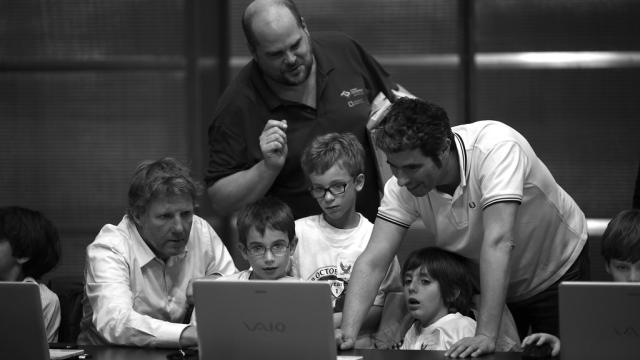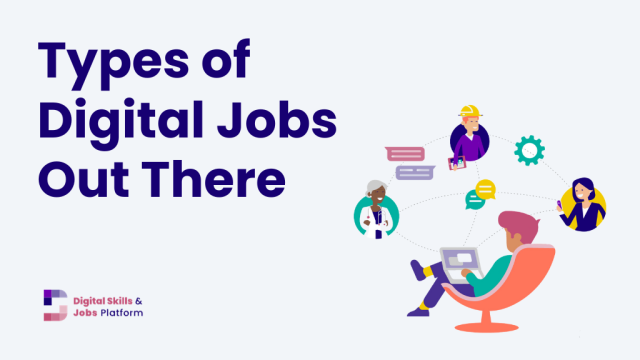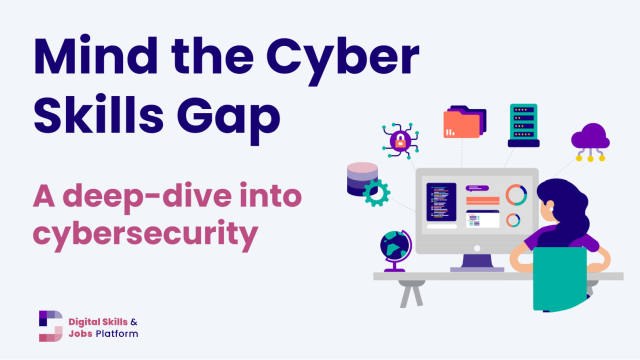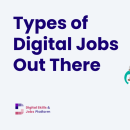Digitally mature, enabling & inclusive education: challenges & opportunities - a deep-dive

Providing inclusive, digitally mature education pathways to learners in a rapidly evolving digital world represents a true challenge for the education system. Institutions and policy-makers need to address a multitude of challenges including curriculum change, educator capacity, or the provision of infrastructure, operational devices, and connectivity. A range of opportunities to adapt current, existing approaches to teaching and learning are available for training providers to help them stay on top of the evolving nature of technology – through an integrated, holistic approach that supports inclusive education.
Introduction
Many existing frameworks out there can guide us through the digital transformation of education (McCarthy et al., 2023). This paper looks at the main areas (or topics) of the European Commission’s Framework for Digitally Competent Education Organisations as a way to examine some of the key issues facing education institutions.
These topics reflect the challenges and issues across education institutions and organisations: whether they are training providers, schools, or academia (and irrespective of the age of the learners with whom they work). The framework was built to explicitly address a range of education institutions in the European Union so is most directly applicable in this context, especially when compared to other frameworks used in academia and industry. Take a look at the European Commission’s framework for digitally competent education organisations in Figure 1 on the next page of this deep-dive to see what makes an education institution digitally-mature.

The role of vision, leadership and governance in education
Challenges for a digital and inclusive education ecosystem
If the vision to achieve is inclusive education, underpinned by the use of technology, then the first major challenge is to embed this across the organisational mission and vision. Leadership is critical to address this challenge. Although, as Bi, 2019 observes, many leaders seem willing and keen to embrace digital technology in an inclusive way, a big part of them lack the necessary skills and knowledge to do so – whether this is technical, strategic, or managerial (such as leading in change management to build a strategy and a plan that brings stakeholders together to achieve the vision). An opportunity exists for training organisations and teacher professional development (PD) specialists to provide more support – traditional PD, mentoring, professional communities – for education leaders in driving digital transformation. Research shows that those leaders who have adopted transformational, pro-active leadership styles are driving better uptake of digital technologies in their institutions, while also succeeding in creating a more positive environment for staff and students (Antonopoulou et al., 2021; Khan et al., 2020; Hallinger, 2003).
To execute on this vision of inclusive, digitally-mindful education, the availability of resources remains a major challenge for many education organisations. Governments, for instance, often allocate budgets for educational institutions to acquire digital devices. But no budget is planned to support complementary aspects, like training staff or engaging expert organisations to help with change management. National and international funding authorities need to more proactively reflect on how to enable funding of holistic digital change rather than isolated infrastructure procurement, while individual institutions need to think creatively about how to bring multiple funding sources together to achieve their transformation.
Disempowerment represents another challenge. Education institutions with more advanced visions may find themselves constrained by the wider education system. For example, although management may wish to drive project-based collaborative learning using technology, national assessment requirements may prescribe exam-based summative assessment that works at cross purposes to this goal. To remedy this, education system leaders may want look to examples of systems such as Finland, where more freedom to plan, deliver and assess curriculum objectives is devolved to education institutions (Azorin & Fullan, 2022).
Teaching and learning: state of play
Throughout Europe, technology usage in schools post-Covid remains higher, compared to pre-pandemic times. At the same time, the use of technology for student learning has dropped significantly, while use on the part of teachers has stayed steady (OECD, 2019). This indicates that teachers and schools have shifted their practice in the use of technology for administration, communication among teachers, and from teachers to parents (OECD, 2023; Van der Graaf et al, 2021). Despite large increases in the availability of devices and connectivity in schools, only 30% of students in European institutions are on average equipped with devices. In North America, this ratio is close to 100% (Futuresource, 2023).
Empowering teaching and learning practices: alternative approaches
It is thus clear that although progress has been made, too often the adoption of new, digital technology has not been applied to teaching and learning. Research-based approaches like SAMR (Terada, 2020) and TPACK (TPACK.org, 2012) can be communicated and explained to teachers better, so they can navigate how best to integrate technology whilst embedding their own pedagogical context. Such approaches have the potential to support teachers and educators in understanding the role of technology in teaching and learning. See the SAMR model, which stands for “Substitution, Augmentation, Modification and Redefinition”, illustrated in Figure 2 below. The TPACK model, on the other hand, refers to “Technological Pedagogical Content Knowledge”, and in general, aims to identify the types of knowledge that teachers and educators should possess to be able to effectively integrate digital technologies within their teaching practices, whilst also reflecting the multi-layered and extremely complex context of being a teacher (Koehler, 2012).

The opportunities here thus are to further leverage digital tools to support the transformation of teaching and learning. For instance, too few schools and governments make use of (mostly free) industry-provided training and support on both institutional transformation and transformation of pedagogy when they procure their devices (UNESCO, 2023). Academia can focus on documenting successful new forms of pedagogy using technology in pedagogically relevant ways and understanding the criteria and factors that determine positive learning outcomes
Drawing a full picture of digital capability – with digital tools
A further opportunity that opens up here is to ensure that leadership of schools and institutions actively push for digital transformation themselves. Education leaders can use existing self-assessment tools like the European Commission’s SELFIE, focused on the school level, to help schools “to get a picture of where they stand and to develop an action plan in order to enhance their digital capacity”. This is particularly important as prior research from European Schoolnet (European Schoolnet and University of Liege, 2013) has shown that a supportive school environment is a key enabler for digital transformation of pedagogy. Other tools, directed at the general public like the ‘Test your digital skills’ tool of the European Commission can help identify personal areas for improvement and act as a bridge to the competences required for the general labour force, ensuring teachers’ aptitude is not lagging behind. Training providers have an opportunity to develop further support tools to coach and mentor leaders among themselves to learn across schools, while further academic research would be useful in identifying and documenting how digitally transformed schools have impacted pedagogy.
Professional development
Going further with a digital tool in hand
Close to half of teachers in Europe (40%) surveyed by the OECD in 2018 reported that they need additional professional development to use technology effectively in the classroom. Covid-19 also bears a mention here, as it forced many teachers to rapidly adapt to using online technologies literally overnight, thereby improving this metric. Still, a more thorough and consistent approach to professional development is needed. Teachers are also suffering from burnout and overload following Covid (Robinson et al., 2023), which may limit their interest and ability to engage in additional PD that ends up increasing their workload. There is also an aging population of teachers across the EU - they may be more reluctant to adopt technology or to change pedagogical practice as they are nearing retirement.
On the other hand, education leaders can support better professional development (PD) in their own institutions. They can encourage individual teachers to upgrade their own practice, again - by looking at free online pedagogical training for use of technology provided by either their own national providers or technology companies who have extensive platforms for these purposes (e.g. Apple Education Community, Microsoft Learn Educator Centre). Academic institutions and training providers also have the opportunity to provide appropriate PD to teachers; for instance, through platforms such as FutureLearn and the European Schoolnet Academy.
Use of tools like the EU’s SELFIE for teachers can be encouraged by leaders to help teachers to identify their own strengths and weaknesses, enabling them to evolve. School leadership may also look at integrating SELFIE within the annual assessment of teachers. Encouraging knowledge-exchange amongst staff is pivotal too. Research (Keiler et al., 2020) shows that mentoring and peer-learning approaches have proven impactful in teacher practice, benefitting especially new teachers. Streamlining knowledge exchange to stimulate a more productive and informed environment in ICT pedagogy can be fruitful.
Content, curricula and assessment
This area remains immensely challenging for many education systems. Across the EU, many education systems have insufficient digital content - particularly in languages that are less spoken, or in less-developed countries. Where digital content mapped to the curriculum exists, it is often insufficiently innovative as it may have been transferred from more traditional publications into a digital environment without developing the opportunities for interactivity that technology provides. The power of traditional educational publishers has held back innovation in digital content throughout Europe. While Open Education Resources (OER) exist, they are often more frequently adapted to tertiary level and thus a gap exists at lower ages and stages, and they require mapping to national curriculum objectives.
The structure of curriculum and assessment is another barrier to reaching an inclusive, mature, digital education system. There is still ongoing debate as to whether Information and Communication Technology (ICT) is embedded across the curriculum or requires a standalone ICT curriculum – or perhaps even both? Where ICT is a standalone in the curriculum, there is often a shortage of specialised teachers able to teach the subject.
Many experts also point to assessment models as an obstacle to better integration of technology in learning: traditional summative examinations, held without access to technology, run counter to the use of technology to support information gathering, analysis and usage of technology tools to produce student work (Haleem et all, 2022).
Nonetheless, in this area, there are many opportunities to be seized. Repurposing existing traditional budgets for content purchase for digital needs could be considered – as illustrated by the current move in the Netherlands investigating reusing the national textbook budget per student for digital tools. Training providers could also look to provide additional training to teachers to better support them in repurposing and developing their own OER for the classroom. Academia can advance the digital content agenda by creating appropriate guidance on inclusion, accessibility and pedagogical quality standards that could be adopted in education systems, as well as developing technical approaches to localize and repurpose content in new languages using the opportunity of generative AI.
Curriculum reform for ICT is also critical. The EU’s DigComp Framework for Citizens (Ferrari et al., 2013) defines knowledge, attitudes and skills required in several domains of ICT competence, and provides an excellent base from which to develop general ICT skills across the education system. The DigComp framework is now in its 2.2 edition. It is widely recognised that the focus on computer science in European curricula needs to increase – and so, looking at curriculum materials from the private sector and NGOs (like code.org) and integrating them could be helpful. Additional research from the academic world on the most effective pedagogical approaches for ICT, and how to develop inclusive ICT learning experiences, would also support a widened interest base in the topic amongst students, regardless of the country they are based in. Further impetus in this direction is coming from the European Commission´s Digital Education Action Plan 2021-2027, where quality Computing Education is a key element under the priority “Enhancing digital skills and competences for the digital transformation”. The Skills Agenda for Europe also outlines access to education, training and lifelong learning for everybody in Europe as an essential prerogative to its success.
To address these challenges, there are opportunities to help support evolution in content, curriculum and assessment. Governments and leaders can ringfence budgets specifically for digital content, either to support teachers through training to improve their own digital content creation or to procure digital content from publishers. Grants can also be provided by government to stimulate the creation of local language and curriculum-aligned content production. Reforms to assessment models are also important, to shift to more project-based assessment, or by changing exam processes to include access to the internet and digital resources as part of the examination.
Collaboration and networking: teachers’ edition
Collaboration and networking among teachers to improve their pedagogical practice using technology can be challenging. Firstly, teachers already often have to commit long hours to planning and assessing class work, so finding the time to collaborate is often simply impossible. Some teachers and school systems also focus more on individual teacher’s planning and working alone, and shifting to a culture of sharing presents its own set of difficulties. For teachers and schools to collaborate with other organisations is not always easy either: differing culture, timelines and vocabulary can be a barrier to partnerships, as well as the administrative complexity involved can be hard to implement (e.g. bringing in guest speakers when official procedures such as background checks).
However, there are plenty of indications that collaboration and networking can be valuable in evolving approaches to technology in schools.
For instance, engaging with peers can be encouraged online through communities of practice, or joint pedagogical projects. Platforms like eTwinning, where teachers can join forums on topics of interest, attend online training sessions and create joint projects where technology acts as the “glue” between classrooms across distant locations, can also improve knowledge-sharing, and ensure teachers learn from one another in an inclusive environment (Kampylis, Bocconi and Punie, 2012) and (Vuorikari 2015). Leaders can proactively engage their teachers in such programs to improve ICT pedagogy.
Other European efforts support collaboration and networking with industry experts and partners to develop new pedagogical models related to technology. For example, the Scientix STEM Discovery Campaign (Scientix, 2023) connected schools to big technology companies such as Intel, Cisco and Lenovo to offer new learning activities on the topic. The annual October EU Code Week campaign of the European Commission proposes a similar approach focusing more specifically on coding and computer science.
Digital infrastructure: key building blocks
All of the above opportunities however cannot be exploited unless the fundamental challenge of digital infrastructure is addressed. In Europe, the availability of 1:1 devices for students in schools remains a barrier. Around 5% of children in Europe are digitally deprived, meaning that they live in a household unable to afford a computer, or they live with adults unable, or unwilling to provide a household internet connection. Of course, differences amongst Member States prevail: in Iceland, only 0.4% of children are considered digitally deprived, whereas in Romania and Bulgaria the figure soars above 20% (Ayllón, 2023).
Even where devices are available, schools may be relying on “Bring Your Own Device” strategies which result in a difficult environment for teachers (as they have to manage multiple different operating systems in one class), and also compound social exclusion as the least well off students will typically have poor quality devices. While many systems procured large numbers of devices during Covid lockdowns, many of them are poor quality due to their low cost and are already failing (Pew Research Centre, 2022). There has been almost no focus on procuring good quality devices with long life spans or on the recyclability of the devices.
Despite these challenges, the European Union is making efforts to address the infrastructure gap. Funding from the EU Recovery and Resilience Facility across many Member States has been directed towards the provision of new devices and internet access for schools. Germany’s national Recovery and Resilience Plan (RRP) includes the financing of loan devices for teachers in both public and private schools. Under their respective plans, Italy is set on investing in high-speed connectivity for schools, while most of the allocated funding in Greece for that area will go towards providing digital equipment for schools, teachers, and students.
Support from the European Regional Development Fund (ERDF) and the European Social Fund (ESF) in Poland has gone towards setting up gigabit connection for schools, equip educational institutions with computer labs, train teachers and develop digital learning material. In Italy, ERDF and ESF funding is directed mainly at purchasing IT equipment for school computer labs (EU Court of Auditors, 2023).
Some school systems are also switching to the use of leased devices, which reduces the initial purchase price and enables them to be swapped when they become old or encounter defects. Decisionmakers in the Nordic countries are starting to look at sustainability as part of their procurement process, and this approach is worth a closer look (and perhaps adoption) in Europe.
Conclusion
Reaching the goal of inclusive education through technology is a challenging one. However, the Framework for Digitally Competent Education Organisations provides an excellent tool through which to assess policy and practice in achieving this goal. Using this assessment enables decision makers to more effectively design and implement approaches that can help overcome the challenges, and make the most of opportunities to further develop digital teaching and learning in their countries and education institutions. Many solutions have already been piloted and adopted across the European Union, and ensuring that ongoing dialogue and research is committed to this area will help to diffuse key practices throughout the EU Member States.
Download this paper
Download the Digital Brief on the challenges for an inclusive and digitally mature education sector in PDF format, and view its references below.
About the author
Over the last 20 years, Alexa Joyce has worked with governments in more than 100 countries across the world in digital transformation. She's been active in education technology for more than twenty years, with half of her career in big tech companies and the other half in the public sector. Alexa has worked for several leading international education organizations: European Schoolnet (the network of 34 Ministries of Education in Europe), UNESCO and OECD. She has also been an advisor on numerous boards including European Centre for Women and Technology, ALL Digital, a European network for digital inclusion, University College London’s EDUCATE incubator for ed-tech start-ups and the Institute for Ethical AI in Education.






